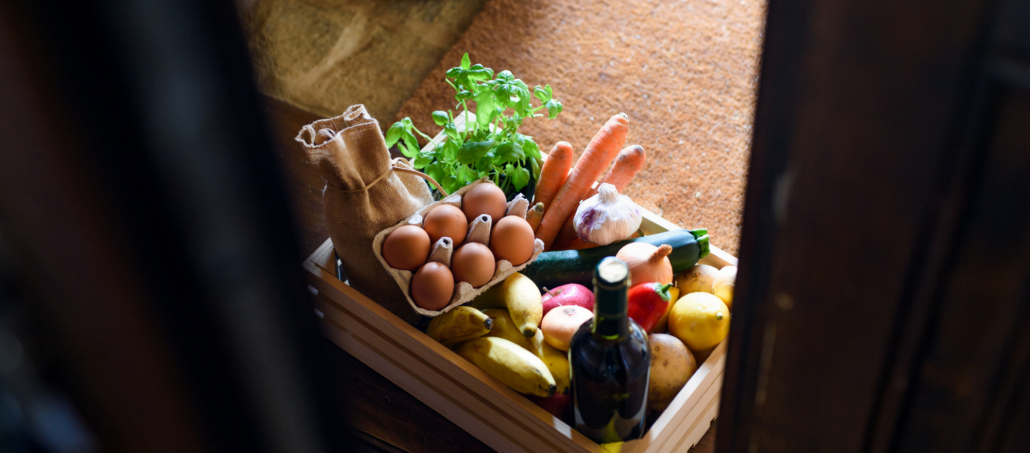
03/07/22; SYDNEY MORNING HERALD
Some of Sydney’s richest suburbs have been used by start-ups and supermarket giants alike to test and fine-tune retail innovations and rapid delivery services with affluent customers willing to spend a bit extra to claw back time in their day.
Start-ups Voly, Milkrun, and recently Woolworths have been jostling for attention from eastern suburbs residents in recent months with ambitious promises of grocery deliveries in 10 minutes or less, luxury products in high-end store fit-outs, and a proposed ‘drive-thru’ supermarket.
The supermarket juggernaut has been busy in the area lately: its newly opened Double Bay Metro store was described on social media as “the bougiest Woolworths in Australia”, featuring a cafe, pasta bar, social enterprise bakery, and vegan truffle chocolates at nearly $100 a kg. Woolworths has also proposed a new ‘direct-to-boot’ supermarket in Rose Bay that doesn’t let customers set foot inside.
The end result is a range of goods and services in this corner of Australia that doesn’t exist anywhere else in the country.
The eastern suburbs is home to some of Australia’s richest residents. Double Bay has an average income of $202,598. This is followed by Darling Point, Edgecliff, Rushcutters Bay, Point Piper ($198,813) and Vaucluse and Dover Heights ($197,886).

The area is also intensely populated: Elizabeth Bay claims the title of Australia’s highest-density suburb, with more than 20,000 residents per square kilometre. It’s double that of central Sydney’s Haymarket (10,200), and quadruple Parramatta’s population of just fewer than 4000 per square kilometre.
Social researcher and demographer Mark McCrindle said residents in Sydney’s east had the funds to be more sophisticated or innovative with shopping.
Neighbourhoods in the east also have a higher proportion of 25- to 39-year-olds (28 per cent) compared to the national average (20 per cent) – individuals at the peak of their earnings potential and labour force participation, said McCrindle.
“They are the reason that the new test market for discretionary services are in higher-earning areas like the eastern suburbs,” he said.
According to Woollahra Municipality Council mayor Susan Wynne, COVID-19 was a key tipping point for many residents in the area who became willing “early adopters” of contact-free services.
“That flexibility of just being able to say ‘I need something now, within 30 minutes’ probably sits quite well with our electorate,” she said.
Local residents, many of whom work from home, also see rapid grocery delivery services as a way to both support local businesses as well as reduce food waste, she added.
Even older Australians aged 60 and above, who comprise about 25 per cent of the eastern suburbs’ population, according to Wynne, have embraced online solutions to stay home and avoid risking exposure to COVID or the flu.
“This is a really fantastic service for them,” she said.
‘Not necessarily a scalable model’: Battle of David and Goliath
Retail experts noted the offerings are highly tailored to the wealthy demographic and are questioning whether demand for services like rapid grocery delivery is high enough to viably expand beyond Sydney’s eastern suburbs.
Brian Walker, CEO of consultancy firm Retail Doctor, echoed the view that the offerings appealed to high net worth individuals in dense urban areas.
“They are unlikely to put [their services] in areas where, frankly, it’s sprawling suburbs, mid- to low-socioeconomic, and people shop with them anyway in the local supermarket. There’s cannibalisation there,” he said.

Grocery delivery start-up Milkrun services Sydney’s inner-city and eastern suburbs. LOUIE DOUVIS
The proportion of couples with high incomes and no children is also higher in these suburbs, Walker added. These factors mean delivery riders can pick up several jobs within a relatively short distance without encountering traffic.
“This is the way they mitigate the risk,” Walker said. “Eastern suburbs is an easy one to start with.”
But fast grocery delivery start-ups now have a “bit of a David and Goliath battle” on their hands, says Walker, noting the ‘newest’ entrant Woolworths – a $43.5 billion juggernaut – has the size and scale to swallow any sunk costs.
“It’s not necessarily of itself a scalable model for the smaller players,” he said, pointing out that the further the distance that has to be travelled, the more margins are reduced. “Goliath, Woolworths, have shops everywhere, has a huge brand name. And frankly if they lose a few dollars … they’re going to pick that up.
“Now, if Milkrun are doing five deliveries in the same time and the same space and they’ve bought the product as well, they’ll probably make some marginal return on it. But if they’re in urban areas … it’s distinctly unprofitable.”

Well-off markets would provide ‘overly optimistic’ insights
Dr Frank Mathmann, a senior lecturer Queensland University whose research centres on customer psychology, notes that these rapid delivery services are coming under pressure from another, increasingly pressing factor: the rising cost of living.
“As a consequence, some of these newly developed habits they may have started during COVID, for instance, getting groceries delivered, may not be something they’re willing to pay for in the long term,” he said.
Woolworths doesn’t charge delivery on a customer’s first three orders via the Metro60 app, and then charges a flat fee of $5 on orders with a minimum spend of $20. But these extra dollars are being counted more carefully now that the price of necessities like fuel and groceries themselves are squeezing household budgets.
“I don’t know whether this is a value proposition that would in any way make sense to a single mother, or other parts of the Australian population that are really feeling the squeeze with interest rates and inflation on the rise,” said Mathmann, who questions how these services can be profitable in a gloomy macroeconomic environment.
And even if these services can find some success in Sydney’s inner-city or eastern suburbs, they’re not indicative of the rest of the nation, he added.
“There is a reasonable probability that the insights they get from these well-off markets are overly optimistic about the viability of those services,” he said.
“Just because something works in an environment where you [earn] half a million dollars a year and households have outright home ownership, doesn’t mean it would work everywhere,” he said.
Higher interest rates also tend to make for a more risk-averse investment environment, meaning companies like Milkrun may struggle to secure more funding, Mathmann added.
“I think over the long term, it is very likely the price is simply not sustainable.”
Subscribe to our free mailing list and always be the first to receive the latest news and updates.
